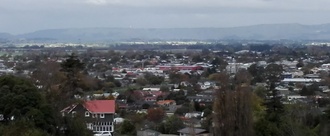-
Put our People over Profit - Stop the Repeal of the Smokefree LegislationMāori Leadership in 2010 led the march to protect Māori and all population groups of Aotearoa against the negative harm of tobacco on whānau. A Smokefree Aotearoa goal by 2025 was set with a target of having less than 5% of all populations smoking. This new coalition government of National, ACT and NZ First will go down in history in the wrong way, allowing Big Tobacco lobbyists to inform a roll back of world leading public health action. Our communities have spoken, loud and clear, since the 2010 Health Select and Māori Affairs Select committee that this is what they want, the people of Aotearoa New Zealand will be failed once again, all in the name of a handful of tax cuts. Currently, 5,000 New Zealanders die from the harms of tobacco-related illnesses every year. If we repeal the Smokefree Act, loved ones will die, all so tobacco companies can continue to profit. In 2022 we introduced world-leading legislation to support the goal for Aotearoa to be smokefree by 2025. The need is clearly demonstrated, that Māori, Pacific and low socio-economic neighbourhoods are saturated with tobacco sale points, and have the highest smoking rates. We simply cannot afford to go backwards, while our whānau continue to die at the hands of this product. The government of 2023 will walk away with the literal blood of its constituents on its hands.52,770 of 75,000 SignaturesCreated by Hāpai Te Hauora
-
Deny Kelly-Jay Keen-Minshull Re-Entry Into AotearoaThis request is rooted not only in the impact of her visit in March this year, but also her extensive history of hateful speech and incitement of violence. Her return to Aotearoa would pose a significant threat and risk to public order and the public interest - this holds especially true for our takatāpui, transgender and gender diverse communities. Disinformation Project Researcher Dr Sanjana Hattouwa reported that after Keen’s visit to New Zealand, the amount of vitriol towards the trans community was “to a degree we’ve never studied before ” with “extraordinarily violent” content towards trans people being distributed widely. He described the level of hate towards trans people as “genocidal”. Outside of Aotearoa, Keen-Minshull’s public statements and actions have included: - Threatening that transgender people, gender diverse people, “and anyone else who stands in [her] way” will be “annihilated” - Stating trans men should be sterilised - Calling for men to carry guns to patrol women’s bathrooms against the imagined threat of trans women - Encouraging violent outbreaks at her tours in the UK and US, with her supporters allegedly assaulting counter protestors and inflicting violence on trans people - Organising rallies attended by members of the Proud Boys - a designated terrorist group in Aotearoa - Being excluded by other groups and members of her own anti trans circles because of her racism, Islamophobia and aforementioned ties to far-right white nationalism.* As the Minister for Immigration, Mr. Little, you have the right under s.16 of the immigration act 2009 to deny a visa, entry permission or entry waiver to a person likely to be a threat or risk to public order or to the public interest. The threshold for both appears to be low, considering that it was the same section used to bar the rap group Odd Future from Aotearoa in 2014. At the time, Immigration New Zealand said in a statement that their rationale for the ban under s.16 included "incidents at past performances in which they have cited violence." In an email dated 12 February 2014, obtained by Stuff as part of the OIA, Immigration NZ wrote: "[Odd Future] clearly has a history of promoting and inciting hatred…were they permitted to travel to New Zealand and perform I believe on the basis of their track record thus far, they are likely to incite violence towards women, racial, sexist and homophobic disharmony in New Zealand". Keen-Minshull is a person who causes demonstrable risk of harm to our public. Who employs hate speech and calls for violence against some of Aotearoa’s most vulnerable citizens. Whose public events have already caused disruption to public order here and overseas. TLA believes this justifies you, Minster Little, in exercising your powers under s.16 of the Act to deny her entry to Aotearoa, and for the safety of our trans citizens and the general public interest, we call on you to do so. Yours sincerely, Trans Liberation Alliance Sources: Posie Parker to return to NZ in September: Will Border Officers Let Her In? New Zealand Herald, 2 August 2023 https://www.nzherald.co.nz/nz/posie-parker-to-return-to-new-zealand-in-september-will-border-officers-let-her-in/QMFZ42LTVNFD7DS5KAF5C6URFQ/ Green Party Aotearoa Veale J, Byrne J, Tan K, Guy S, Yee A, Nopera T & Bentham R (2019). Counting Ourselves: The health and wellbeing of trans and non-binary people in Aotearoa New Zealand. Transgender Health Research Lab, University of Waikato: Hamilton NZ. https://researchcommons.waikato.ac.nz/bitstream/handle/10289/12942/Counting%20Ourselves_Report%20Dec%2019-Online.pdf?sequence=54%26isAllowed=y Anti Trans Hate in NZ becoming 'genocidal’ - One News, Friday, 5 May 2023 https://www.1news.co.nz/2023/05/05/anti-trans-hate-in-nz-becoming-genocidal-disinformation-project/ Why we need to protest Posie Parker, Redflag, 5 March 2023 https://redflag.org.au/article/why-we-need-protest-posie-parker4,013 of 5,000 SignaturesCreated by Trans Liberation Alliance

-
Upsize the celebration of te Reo with Mahuru MāoriTe Reo Māori - the Māori language forms a part of our unique identity and culture in Aotearoa New Zealand. It is one of the official languages of our country and as English is spoken every day, everywhere by everyone so should te reo Māori (with sign). A strategy to enable its growth was to have a concentrated period to celebrate and promote te reo māori, that is Te Wiki O Te Reo Māori - Māori language week and has been the case since 1975. Almost 50 years has passed and it's time to uplift the concentrated celebration and positive promotion of our Reo Māori - Māori language to further enable its growth to thrive and flourish, and its development as a language of value for all Aotearoa New Zealanders. It is what makes us uniquely different in the world. Making the official celebration for the month of Mahuru ( September) called Mahuru Māori will really boost the promise of a vibrant future for te reo Māori.547 of 600 SignaturesCreated by Danny Tahau Jobe
-
Oppose AUKUS: For an independent, demilitarised and nuclear-free PacificAUKUS is an aggressive military pact. Security in New Zealand and the Pacific can only be ensured by centring sustainable development, Indigenous rights, and environmental protection. AUKUS makes the world more dangerous. New Zealand participation in AUKUS would deepen geopolitical tensions in the Pacific, and threaten Pacific nations’ long held policy of “friends to all and enemies to none”. AUKUS impedes climate action. Climate change remains the single greatest threat to the livelihoods, security and wellbeing of all peoples of the Pacific. The threat of climate change requires international diplomacy and cooperation, not militarism. AUKUS threatens our nuclear free legacy. Aotearoa New Zealand has a proud history of anti-nuclearism and solidarity with the Nuclear Free and Independent Pacific movement. AUKUS is not based on public consultation. It accelerates climate injustice, violates our treaties and regional commitments, and erodes regional decolonisation efforts. We urge the New Zealand government to reject any role in the AUKUS military pact and condemn the use of nuclear weapons and non-peaceful nuclear technologies in the Pacific. We urge the New Zealand government to recommit to an Independent and Pacific-led foreign policy, in accordance with Te Tiriti o Waitangi, our regional obligations, and our national identity. This petition is led by Te Kuaka. More information on MATIKA HAWAIKI campaign events can be found here: http://tinyurl.com/matikahawaiki More information on AUKUS can be found here: https://docs.google.com/document/d/1fz3DaAXmcll7U-C6Fd063VVq-C37sLgzNPlXFdghl1k/edit692 of 800 SignaturesCreated by Te Kuaka (NZ Alternative)

-
Keep Nga Hau Māngere Birthing Centre openWhere a gap once existed, this state of the art centre has served many whānau, aiga & families. Over 860 babies have been born there. Thousands of women have experienced vital support via labour cares, antenatal clinics, lactation consultant appointments, contraception and birth education/hapū wānanga. 75% of women birthing at Nga Hau Māngere identify as Māori and/or Pasifika. Research has shown that in the first 2000 days Māori and/or Pasifika have preventable, inequitable experiences. Pregnant Māori and/or Pasifika have the highest death rates and are less likely to receive specialist care. Nga Hau Māngere is an already 'up–and–running' solution aligning with new health reforms under Te Whatu Ora's Te Pae Tata (2022). "Kahu Taurima | Maternity and early years" is 1 of the 5 priority actions this government plan (under priority action 1 ‘place whānau at the heart of the system to improve equity and outcomes’). The local community have spoken of how important the centre is: "Māmā in South Auckland deserve the best care while they are pregnant. Speaking from experience Nga Hau Birthing Centre was exactly that for me. They were amazing from the beginning until the end... I truly believe that if I had been with Nga Hau for my first pregnancy it would not have been so traumatic." "Our experience at Nga Hau truly set (us) up for success when we took our baby home. We were as rested as we could be and I was given all the help they had to offer to start our breastfeeding journey... I’ve always had such a sense of calm and a strong feeling of safety when walking through those doors. Mothers deserve to birth at Nga Hau and Mangere/South Auckland deserves to have this incredible facility in our backyard." "All in all a 10/10 experience for me... I pray to God that this place stays so that midwives are able to birth more of mine and other ladies' babies!" Nga Hau Māngere provides an essential service to the community and the Government needs to ensure funding is provided so it can remain open.9,218 of 10,000 SignaturesCreated by Rebecca Kingi
-
Wayne Brown: Don't Cut Community Services!NO CUTS Wayne Brown’s Budget 2023/24 is proposing to cut funding to crucial community support services during a cost of living and climate crisis. The people of Auckland are deeply concerned about the proposed budget. We understand that the Council is facing financial challenges, but we urge Auckland Council to reconsider these cuts as they will have a severe impact on the community. “Cutting regional community focused initiatives … of all groups working with Māori, Pasifika, youth, refugee, new migrant and rainbow communities.” - Page 30, Te Wāhanga Tuatoru: Te Pūtea e Marohitia Ana, Annual Budget Proposal 2022/23. We can see the budget has targeted marginalized communities, yet does not suggest cuts to industry and business whatsoever. The proposed budget cuts will have far-reaching consequences for all Aucklanders, but especially our most vulnerable residents, including children, the elderly, the working poor, and those with disabilities. Cuts to climate change, social services, community venues, public transport, arts,and education will have a devastating impact on these communities, and protesters are determined to make their voices heard. The proposed cuts to community services, including libraries, community venues and centers, youth and homelessness, early childhood education, Arts and culture, water quality and public transport, will have a negative impact on the quality of life for many Auckland residents. These services are essential for the well-being of our community and provide opportunities for social interaction, education, and access to essential resources. Furthermore, the proposed cuts to environmental initiatives, including park maintenance and waste management, will have a detrimental effect on our environment. These initiatives are critical to the sustainability of our city and the protection of our natural environment and resources. We understand that difficult decisions must be made regarding the budget, but we urge the Council to prioritize the needs of the most vulnerable. We believe that alternative solutions and a better budget is possible. The Auckland council’s feedback report suggested that the majority of Aucklanders reject this proposed budget, and it is not suited to serve Auckland residents. The sale of the airport shares is not necessary or helpful and will take Auckland backwards. The airport shares are an important revenue stream, the airport is increasing in value, and it is an asset that the Council can borrow against. The 18% shareholding is also an opportunity for public voice on the future of the airport, a strategic asset - and it is important that the Council holds onto public control in the face of climate and health emergencies. The Community Coalition against the Cuts demands that Auckland Council, Mayor and Councilors listen to Aucklanders. Consider and implement the voices of Aucklanders who took their time to give their feedback. We fully reject this proposed budget, and we demand the following: 1- NO CUTS TO REGIONAL & COMMUNITY SERVICES 2- INCREASE RATES & DEBT 3- NO SALE OF AIRPORT SHARES The super-rich must pay for this budget deficit, not the most vulnerable. We demand that any shortfall in the Council's books should be filled through increased rates on big business, and charges on luxury items such as private helicopters and super-yachts, not cuts which hit the poorest hardest. We need to be expanding services, not cutting them. We demand that the Council expands public transport, making buses and trains free and frequent, and takes more action on climate change amidst a climate crisis. We demand more funding to tackle poverty and homelessness. Therefore, we call on Auckland Council to reconsider the proposed budget cuts and to find alternative solutions that do not compromise the well-being of our community and our environment. We fully reject this budget we will not sit by quietly. We say, NO CUTS! Community Coalition Against Cuts252 of 300 SignaturesCreated by Community Coalition Against Cuts

-
Open Letter: Ban Mining in Conservation Land NowThe Labour Government has a long held policy of extending Schedule 4 over the Southern Hauraki and has had a policy of no new mines on conservation land since 2014. Since taking office in 2017, the Party has failed to make either policy law. We are writing to you now as Conservation Minister to challenge you to step up and prevent mining companies from undermining Hauraki / Coromandel and all conservation land nationwide. We believe that in order to retain any credibility around conservation, your Government must fulfill the commitment made upon first taking office by passing a law that will fully protect all conservation land from mining. We understand that negotiating with tangata whenua takes time, but that specific Te Tiriti obligation can be written in to the law. We are in a biodiversity crisis, we are in a climate crisis. Why would we compromise even part of one of our biggest assets, our biggest carbon sinks, our last bastion of the unique and special ecology of Aotearoa New Zealand, conservation land, by allowing and enabling mining activity in these places. You as Minister have the power, and the responsibility, to ensure that our children and grandchildren can have a relationship with the natural world that sustains us in the years to come; the responsibility to ensure that all the unique flora and fauna reliant on these spaces can survive and flourish into the future, the responsibility to provide for future generations.1,257 of 2,000 SignaturesCreated by Coromandel Watchdog
-
Ensure tertiary students can sit exams without invasive barriersIt's invasive. RPNow requires all users to provide webcam access to their bedroom or private spaces and that data is collected and assessed by staff who do not work for the University, and that data is at high risk of being hacked or breached. It's inequitable. Students who cannot afford a laptop with webcam, microphone and those who do not have a strong internet connection can't access the examinations that they paid for. Students may not be able to book limited university spaces to sit these exams, or able to provide a safe quiet space at home to sit them. It's not culturally competent. Many of our tauira live in whanau based situations, that don't provide for silent or private spaces to take examinations at home. These students will fail if the microphone detects other voices speaking. It's just plain wrong. Students will go to other Universities that don't invade their privacy by implementing invasive and unsafe, low trust systems. Students have a right to be heard, and their voice matters. Universities should not be implementing significant changes to assessment without first consulting with students.18 of 100 SignaturesCreated by Jake Law
-
Open Letter: Pass a law requiring all employers to be transparent about pay gapsEveryone should be safe at work, treated with dignity, and rewarded fairly for their work. But right now, many of our friends, neighbours and family members aren’t being paid or promoted fairly, simply because of their gender or ethnicity. The recent Te Kāhui Tika Tangata Human Rights Commission National Pacific Pay Gap Inquiry Report found that in 2021 for every dollar earned by a Pākehā man, Pākehā women were paid just 89 cents. For Māori men that drops to 86 cents and Māori women 81 cents. For our Pacific whānau, men were paid just 81 cents and Pacific women only 75 cents. This gap means people are not only missing out on crucial wages but opportunities to fulfill their potential and make meaningful choices about their lives. By closing this pay gap we could ensure everyone in our communities has the opportunity to thrive and those families on the lowest wages can unlock the constraints of poverty. Supporting employers to do the right thing and to be transparent about their pay gap is a good first step to help close this gap. Many employers are already playing their part by reporting on their ethnic and gender pay gaps and taking action to close these. Organisations that have signed this open letter: AAAP ActionStation Aotearoa Amnesty International ANZ New Zealand Aotearoa Latin American Communities (ALAC) Auckland City Mission Auckland Women's Centre Aukilani Community Church Barnados Belong Aotearoa Centre for Pacific Languages Diversity Works DB Breweries Ltd E Tu F'ine First Union Fourshells Kava Lounge Gabriella Aotearoa New Zealand Global Women Inclusive Aotearoa Collective Tāhono Iranian Women in NZ K'aute Pasifika Trust Kore Hiakai (Zero Hunger Collective) Living Wage Movement Migrant Action Trust Migrant Workers Association Migrante Aotearoa New Zealand Nelson Tasman Pasifika Community Trust New Zealand Council of Trade Unions New Zealand Union of Students' Associations (NZUSA) NZ Council of Christian Social Services NZ Dairy Works Union NZ Ethical Employers Inc. NZEI Te Riu Roa Organise Aotearoa Pacific Women's Watch NZ (PWW-NZ) Pacific Pay Gap Campaign Pasifika Education Centre (PEC) Peace Movement Aotearoa Polynesian Panthers PSA Raise the Bar Renters United Salvation Army Save the Children SkyCity Entertainment Group Te Kāhui Tika Tangata Human Rights Commission Tertiary Education Union Te Hautu Kahurangi o Aotearoa Tōfa Mamao Collective Tongan Society South Cantebury Unite Union World Vision New Zealand Young Workers' Resource Centre Youth Employability, COMET AKL YWCA2,544 of 3,000 SignaturesCreated by Human Rights Commission
-
Create a Ministry of Green Works to build sustainable, resilient communitiesPeople in Aotearoa want the foundations of our communities to be resilient and sustainable for ourselves and for our grandchildren. We want our homes, our ways of getting around, the grids our power depends on, the pipes our water runs through, and the lines that underpin our communication to be reliable. Most of us want the work we do to make a difference in our communities and care for our beloved natural environment. The destruction from Cyclone Gabrielle and climate-charged flooding in Auckland have shown the urgent need to strengthen those foundations. Decades of underinvestment in essential infrastructure by people in successive governments has left our communities vulnerable. Instead core public development has been contracted out into sporadic projects. This has diverted funding into corporations’ pockets and created unstable employment for workers. The piecemeal approach has also led to the loss of the public sector knowledge that is needed to respond to large scale challenges. We need new institutions designed to do what works to make a just transition from dependency on fossil fuels and high-emission industries. Institutions that can respond to immediate needs, plan for long-term and large-scale change, and embrace Te Tiriti o Waitangi and the leadership of tangata whenua. A Ministry of Green Works would: - Deliver a mass scale build of beautiful, sustainable public housing to reduce the shortage of homes - Roll out an integrated network of passenger rail - Bring resources and support to community-led adaptation and in places that are now vulnerable to climate disasters - Train up the next generation of apprenticeships and essential workers for green infrastructure that is resilient in the face of future challenges The Ministry of Green Works will support Te Tiriti-based governance by resourcing tino rangatiratanga so that hapū can lead in this space as well. It will not be able to take land and could also play a role in recommending that land be transferred to Māori supervision as part of good environmental management. What we build, whether it be marae, public transport or storm water drainage, has the power to nourish our environment and reduce inequities. But we need the government to put a Ministry of Green Works in place now to build the future our grandchildren deserve. Further reading here: https://apo.org.au/node/3154991,961 of 2,000 SignaturesCreated by Team ActionStation

-
Urgent call for FREE cervical screening!The National Screening Unit is currently planning for the upcoming HPV cervical screening programme, due to start later this year. This will be the ONLY national health screening programme not fully funded by the Government. To ensure costs for screening and follow-up tests are not barriers, we are calling for a fully funded, equitable screening programme. This includes FREE screening and follow-up, diagnosis, and treatment. Unless urgent action is taken by the Government to change what is proposed, there will be preventable deaths from cervical cancer. Whānau need their kuia, taua, māmā, whaea and tamāhine, to flourish. No one should die of this preventable cancer. Please sign and share this petition - ngā mihi. On behalf of the many who want this change, those who are undergoing treatment, and in memory of those who have tragically lost their lives to this cancer. This petition is supported by Mana Wāhine, Te Tātai Hauora o Hine (National Centre for Women's Health Research Aotearoa), Hei Āhuru Mōwai Māori Cancer Leadership Aotearoa, the Royal Australian and New Zealand College of Obstetricians and Gynaecologists, the New Zealand College of Primary Health Care Nurses, Tū Ora Compass Health, Family Planning New Zealand, the Public Health Association of New Zealand, The New Zealand College of Sexual and Reproductive Health, Dr Hinemoa Elder, Mayor Tory Whanau, The Cause Collective, Lingy Noiid, and Te Awakairangi Health Network. Please note, in addition to individual signing, endorsement from organizations is welcome and can be detailed above. More information can be found at: https://www.heiahurumowai.org.nz/_files/ugd/b7edfc_621f3417d3b84349be2ed6372d479d30.pdf https://www.heiahurumowai.org.nz/_files/ugd/b7edfc_55f99468f6b44586af3462171d8f0902.pdf3,969 of 4,000 SignaturesCreated by Ande Childerhouse
-
Tiakina tō tātou hau / Save our airMāori have deep seated beliefs of the natural world, that it has a spiritual mauri. This is why we had and still have entities that represent these natural resources. None of the RMA consents ever take this aspect of our beliefs into account. And now the Mauri of nature of Papatuānuku (earth) and Ranginui (sky), Tangaroa (sea), Tāne Mahuta (Forest) is dying, And we will also eventually die because of this. Māori suffer high rates of respiratory illness, cancer and early death not to mention ill mental health because of the systematic barrage of pollution of nature. Everyone will suffer mental illness because nature is dying. This pyrolysis plant will destroy our quality of air, land and waterways through its discharges and waste residue such as charcoal and slag. Thereby creating an unsafe environment for our descendants. We have a lot of polluting factors in this area such as a high volume of traffic and fumes, industrial waste, stench coming from the slaughter houses and their waste, a Pyrolysis plant will add to that pollution as it will be burning plastic as well. The plant needs to have a continuous feedstock which means all the rubbish from the lower North Island will be coming to Feilding! We want an environment now and into the future that is as healthy and sustainable as possible. The barrier to our success is the Horizons regional council and their consenting of such permits. They hear our submissions and our protest but go ahead with their various projects. None of which actually benefit tangata whenua. The other barrier is that the Council which should be listening to ALL of its constituents are putting money and profit before people and the need and want to preserve what we have for future generations. It is urgent because the plant itself is being built and the last piece of the puzzle (the emissions to air permit) is under consideration right now. We do have a time to put in our objections via submission but there is no guarantee that we will win. There is an urgency to pull out all the stops. The impact of your action will allow us to investigate and implement a Zero waste management operation, that will benefit our community via jobs for locals, encourage people to be conservative with their waste, to recycle, re-use , and repurpose. We would have repair cafes which encourage reusing furniture and so on instead of continually throwing unwanted items away.. It will also only deal with our local waste, not everyone's in the bottom of the North Island. Your help will make all the difference.419 of 500 SignaturesCreated by Mereti Taipana



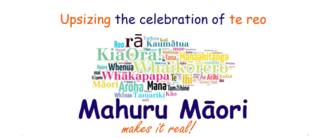.png)
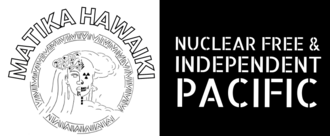

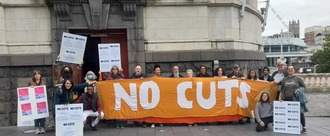
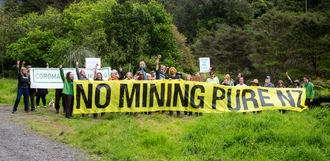
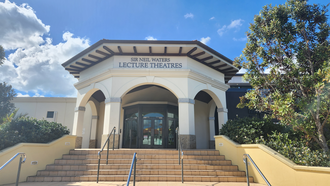

.png)

